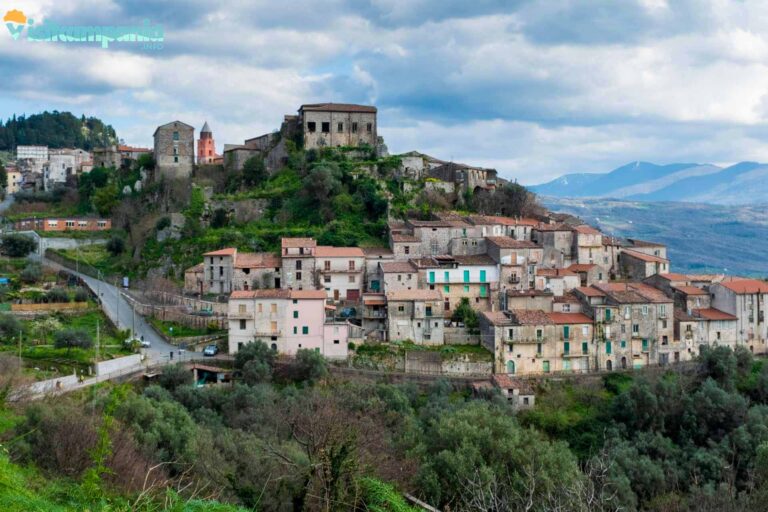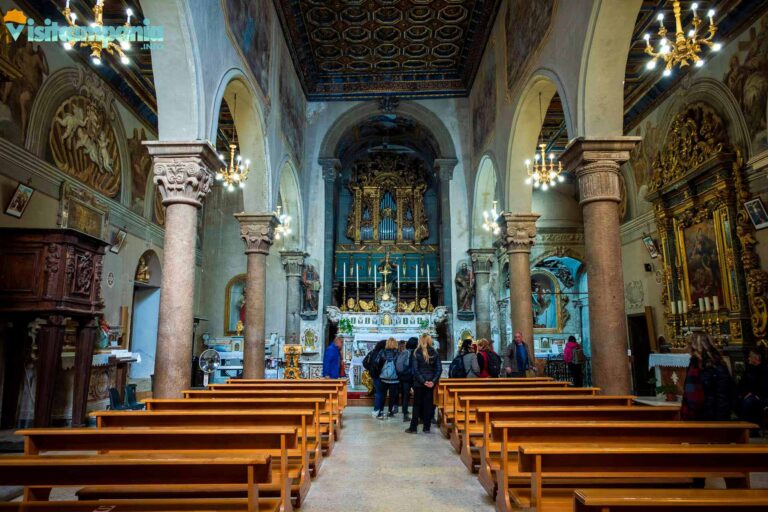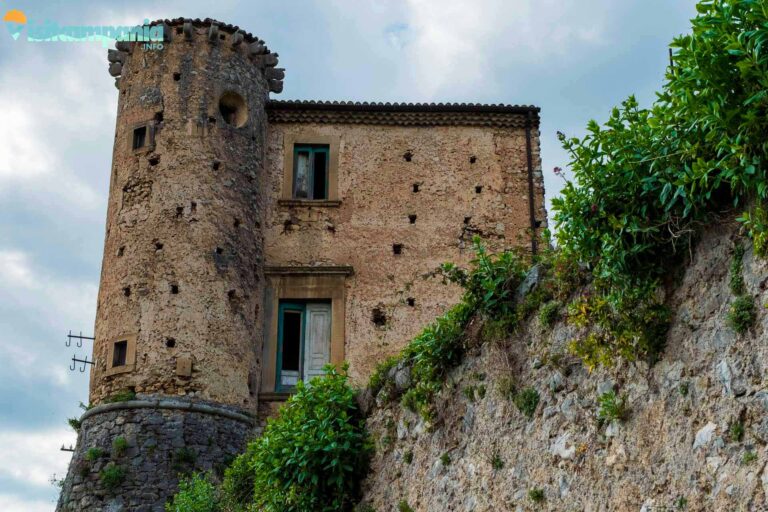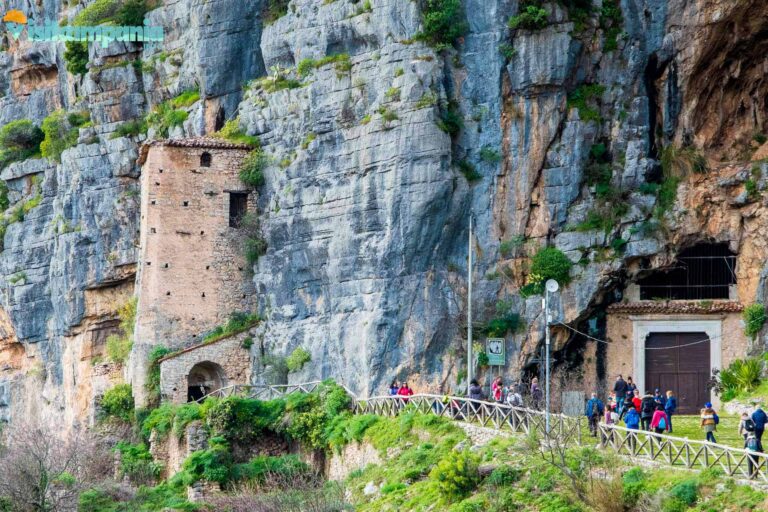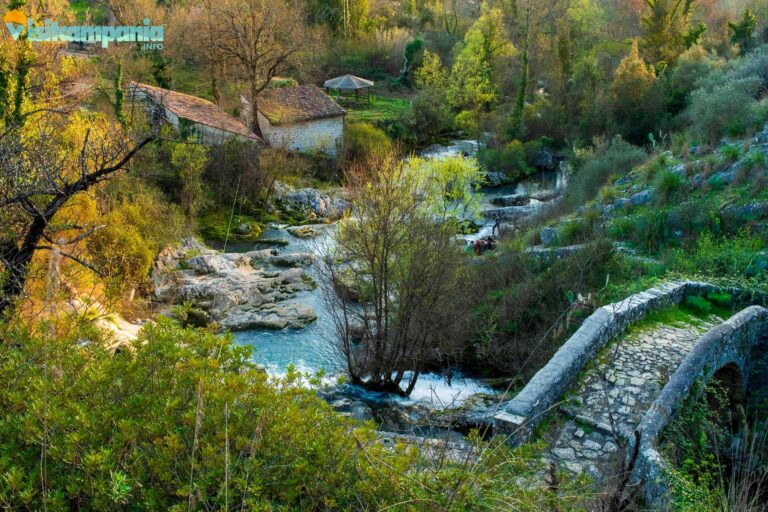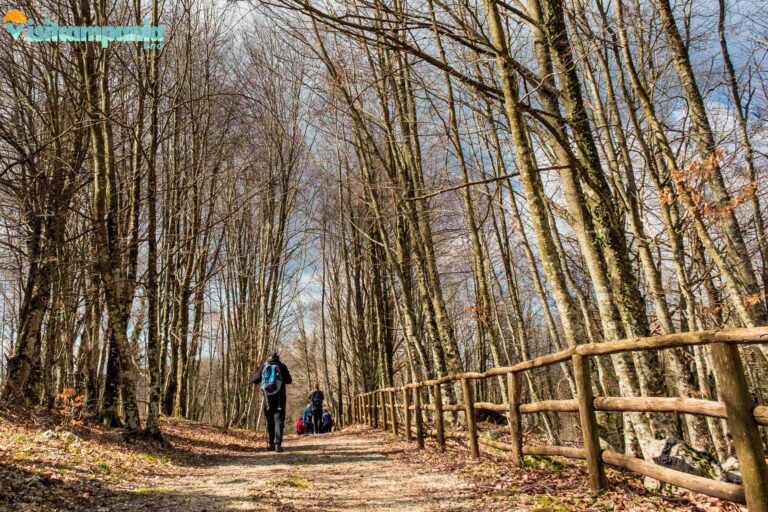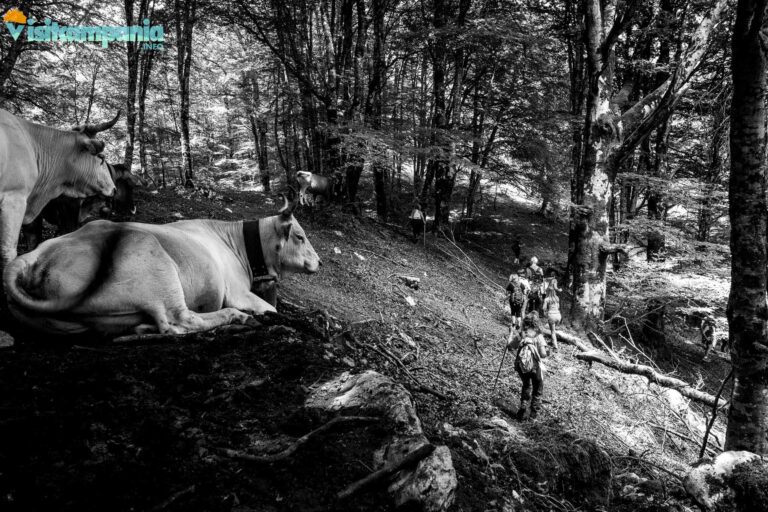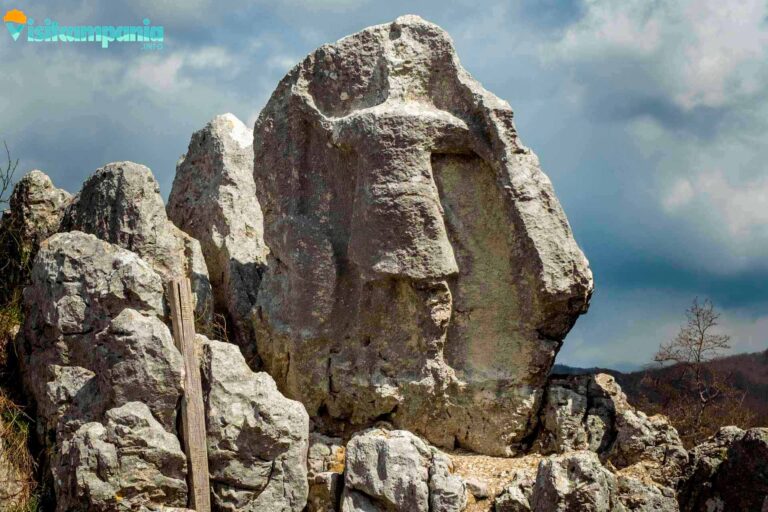What is Sant’Angelo a Fasanella
Sant’Angelo a Fasanella is a small medieval village of 515 inhabitants located in the province of Salerno within the Cilento, Vallo di Diano and Alburni National Park , recognized by UNESCO as a World Heritage Site. It stands on a hill at the foot of the Alburni Mountains and is about an hour’s drive from Paestum , the closest seaside resort. The town is divided into three districts: ” Above the land “, the highest part, ” Inside the land “, where the Church of Santa Maria Maggiore and the feudal castle stand, and ” Basso la terra “, developed in the valley of the Fasanella stream. The area boasts unique historical and natural resources . Among the former, I invite you to discover the Antece sculpture , which depicts an ancient warrior carved into the rock, and the cave of San Michele Arcangelo , a rock church that in medieval times hosted a Benedictine community. The local devotion to San Michele Arcangelo, the town’s patron saint, is still particularly heartfelt and is celebrated every year on May 8 and September 29. Coming then to the naturalistic aspects, Sant’Angelo a Fasanella can satisfy even the most demanding palates immersed as it is in the Cilento, Vallo di Diano and Alburni National Park. The surrounding area, rich in beech and chestnut woods, is crossed by the Cellino stream and the Fasanella river. A short distance away is the spectacular Auso waterfall , also known as the “Auso cave” for the suggestive karst phenomena that characterize the area. Finally, numerous nature trails offer enchanting views of the Alburni Mountains, making Sant’Angelo a Fasanella the ideal destination for those who want to blend history, art and nature in a single experience .
Brief historical notes
Sant’Angelo a Fasanella was born from the union between the ancient city of Fasanella, destroyed in 1246 by Frederick II of Swabia to punish Pandolfo di Fasanella, and the hamlet of Sant’Angelo . The term Fasanella derives from “Phasis,” an ancient Greek city and the name of a river on the border between Asia Minor and Colchis. About three kilometers from today’s town, in the San Manfredi area, are the ruins of a castle and the church of San Pietro, witnesses to the original nucleus of Fasanella. After the destruction, the possessions were returned to Pandolfo thanks to the alliance with Charles I of Anjou. The town, of medieval origin, then passed under the rule of various feudal families, including the Sanseverino, the Capece-Galeota, the Giovine and the Caracciolo. In the 19th century it was a centre of revolt for the independence of Salerno , anticipating the Unification of Italy in 1860. Subsequently, between 1811 and 1860, it was the capital of its own district in the Campagna district of the Kingdom of the Two Sicilies. Finally, it became the capital of a district from 1860 to 1927 during the Kingdom of Italy.
What to see in Sant’Angelo a Fasanella
Grotto of St. Michael the Archangel
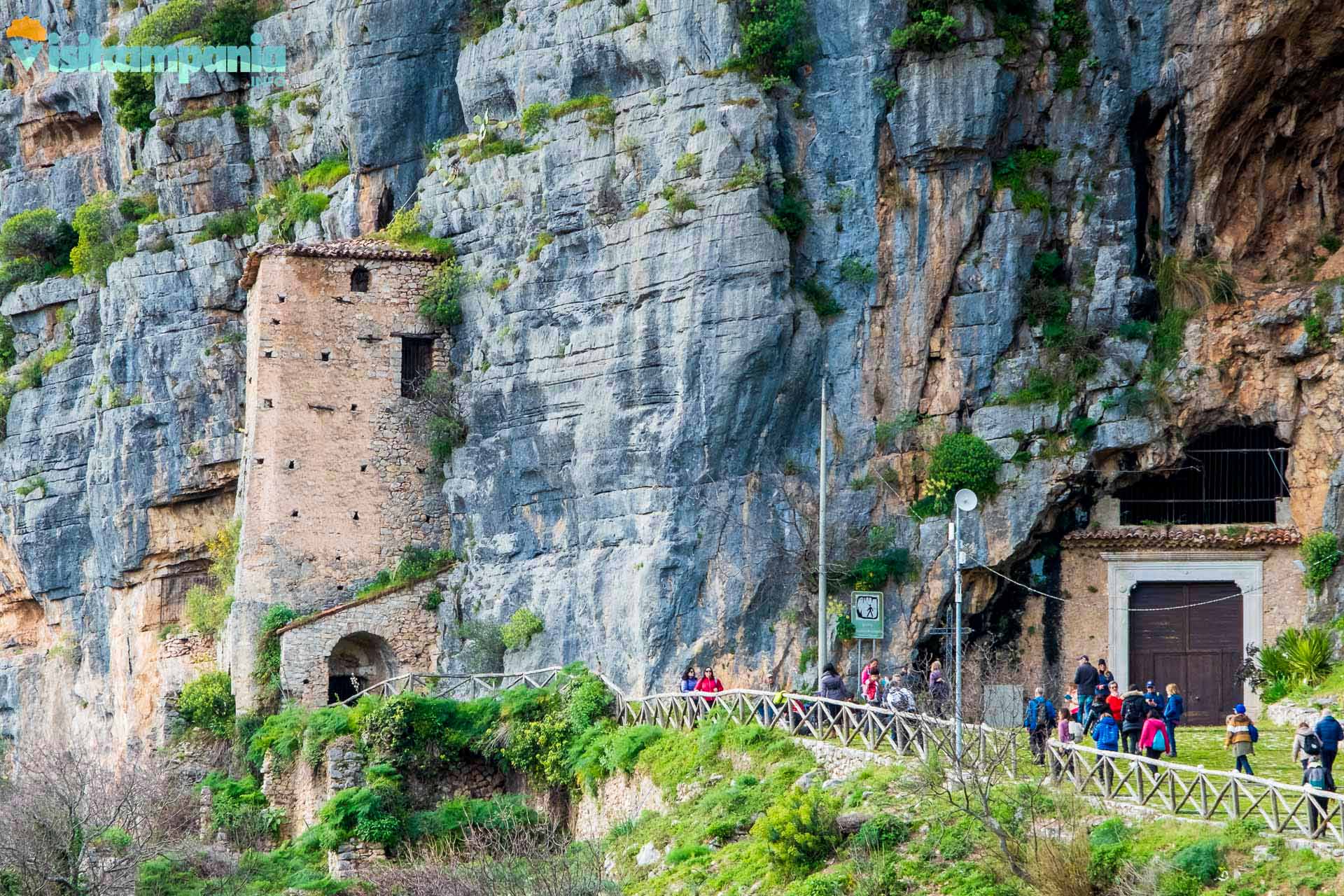
The Grotto of San Michele Arcangelo in Sant’Angelo a Fasanella is a thousand-year-old place of worship nestled at the foot of a rock face , in the Cilento and Vallo di Diano National Park, a UNESCO World Heritage Site. The religious use of the site dates back to the 11th century , when it hosted a Benedictine community, but archaeological investigations reveal that the cavity was already frequented in prehistoric times , probably for the cult of water , as suggested by the stalactites and stalagmites venerated in the past. The entrance, embellished by a 15th-century portal decorated with archaic-style lions, introduces you to an evocative environment that combines nature and architecture: you can see the Gothic aedicule, the well covered in Neapolitan ceramics, the 14th-century frescoes and the ancient tombs . The sanctuary houses the tomb of Abbot Francesco Caracciolo , a 17th-century altar , an organ and a statue of Saint Michael who, according to legend, appeared in a dream to Prince Manfredo di Fasanella. The story goes that the prince’s falcon entered a crack in the rock from which a celestial song was coming out; inside, an altar was found with the imprint of the Archangel’s wings. Even today, the cave enchants visitors with its mystical atmosphere and artistic testimonies that blend Christian devotion and traces of ancient civilizations. To visit the cave , which is generally closed to the public, contact the municipality or local tour operators in advance . You will certainly be welcome.
Church of Santa Maria Maggiore
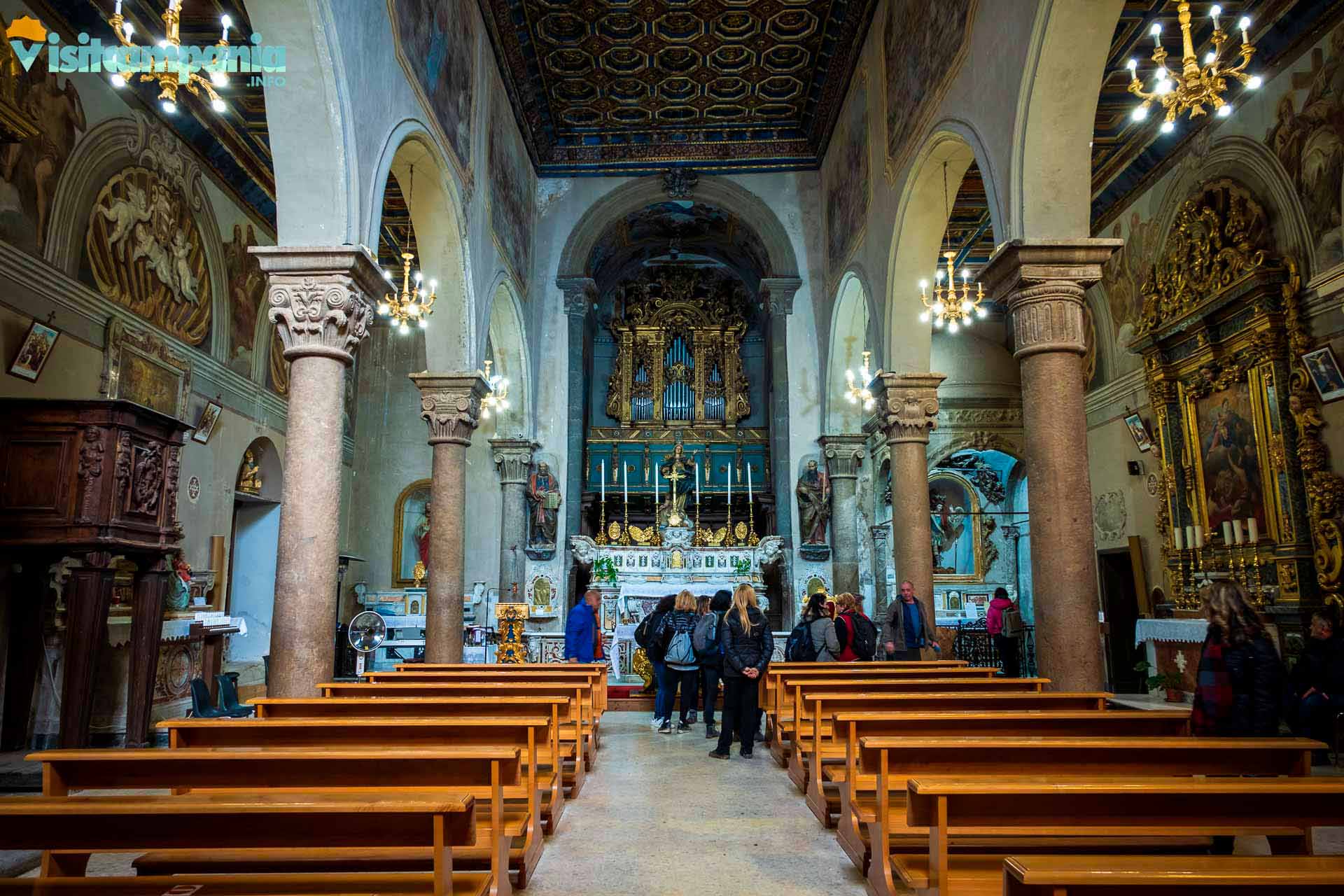
The church of Santa Maria Maggiore , dating back to the early decades of the fourteenth century , was built after the destruction of Fasanella at the behest of Frederick II in 1246. The current layout, dating back to the end of the fourteenth century, was created when the village extended towards the “Dentro la Terra” district, now the historic heart of Sant’Angelo a Fasanella. The façade is embellished with a marble portal sculpted by Francesco da Sicignano, with symbolic figures divided into panels and flanked by two lions. On the left side stands the bell tower , structured in five superimposed orders of decreasing size and topped by an octagonal lantern, enriched by single-lancet windows that enhance its slender verticality. Inside, there are three naves that tell the story and spirituality of the place. The left nave houses three altars, while in the right nave, in the center, there is a large chapel dedicated to the Madonna del Rosario, built using a space of considerable size. The architectural ensemble bears witness to the vitality of the village in the medieval period , celebrating the rebirth that followed the tragedy of the destruction and offering visitors a harmonious synthesis of art and devotion . To visit the Church of Santa Maria Maggiore , which is generally closed to the public outside of religious services, contact the municipality or local tour operators in advance . You will certainly be welcome.
Baronial Castle
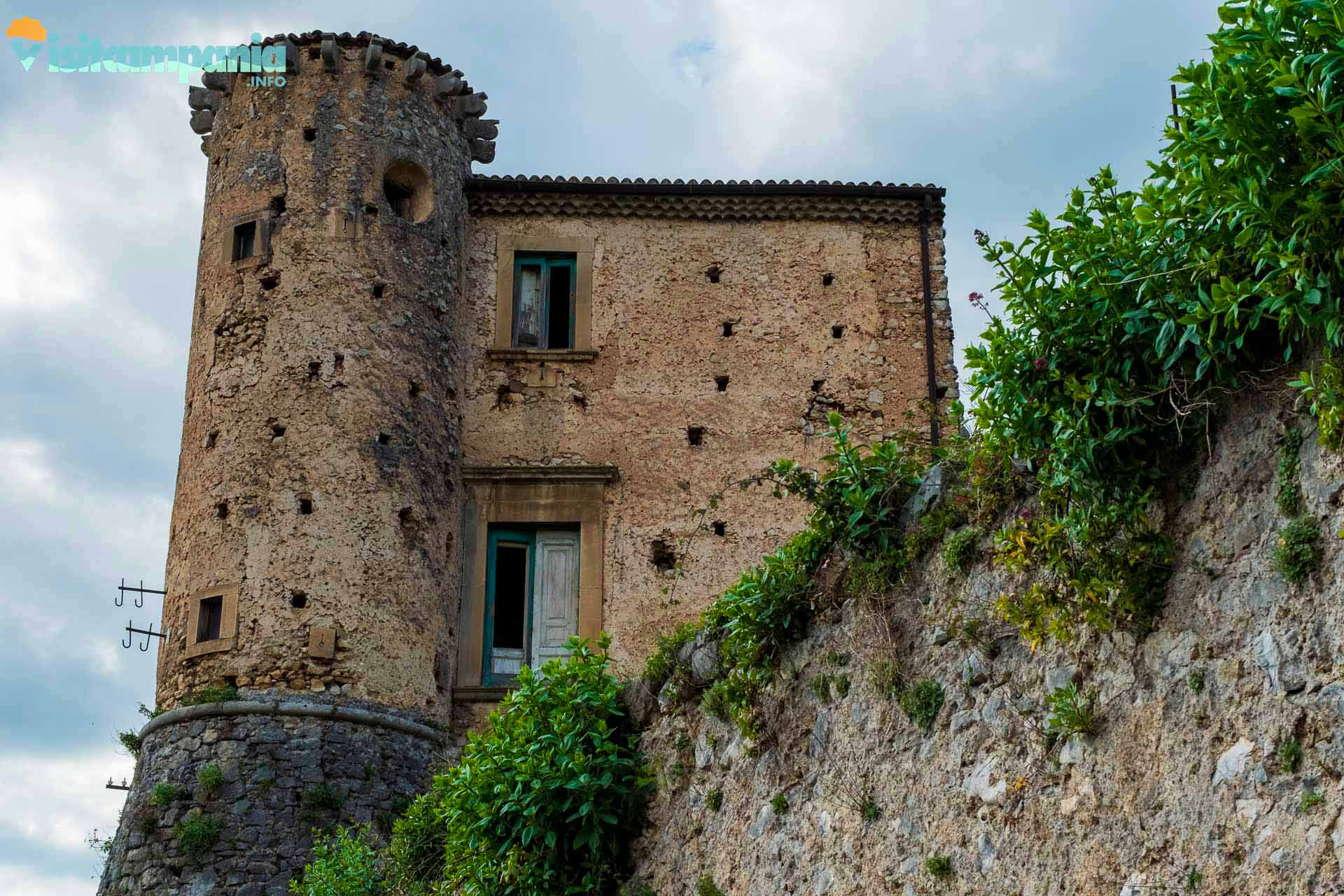
The Baronial Castle of Sant’Angelo a Fasanella probably arose starting from 1426 , when the fiefdom passed to Tommaso Sanseverino. Its bulk dominates the “Basso la terra” district from the natural rock on which it extends almost entirely, with the main body located on the southern slope and oriented along the east-west axis. The oldest elements include a corner tower equipped with machicolations, two underground dungeons covered by barrel vaults and equipped with windows obtained in deep ogival lunettes, as well as two cisterns located in the north-western part. On the ground floor there were stables, warehouses, an oil mill and cellars for wine and oil with large terracotta jars built into the walls. On the upper level there are numerous rooms, some frescoed in tempera after 1663, when Giacomo Capece Galeota acquired the fiefdom and expanded the living area, while the attic housed the servants . Having abandoned the feudal regime in 1816, the magistrate Francesco Leggio purchased the castle which remained inhabited by his descendants until 1980 when an earthquake compromised its stability and caused it to be abandoned . In 2005 the building was transferred to the Municipality of Sant’Angelo a Fasanella, starting the first safety works . The Castle is currently closed to the public for restoration work.
Auso River Waterfall
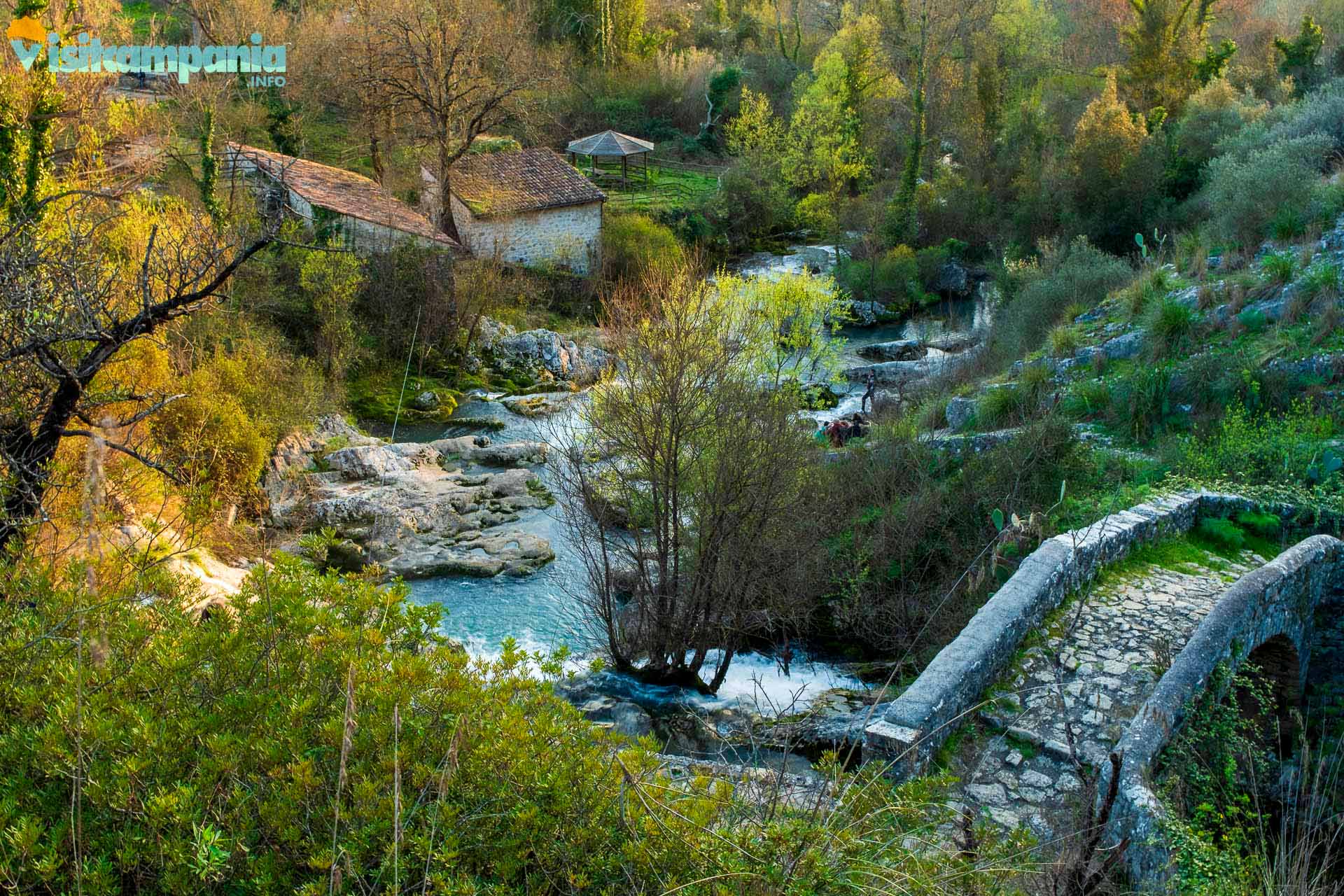
The Auso waterfall is located a few kilometers from the center of Sant’Angelo a Fasanella and is easily reached by taking a short dirt road. The water that flows from the spring, once used to move the millstones of an old mill now in disuse, makes a jump of about eight meters and, after crossing a suggestive humpback bridge , collects in a small lake , then continues among the rocks of the valley. The karst environment gives the water a particular turquoise color and creates natural cavities , including a hidden cave under the waterfall. The surrounding woods make the area ideal for outdoor walks, excursions and quick summer swims in the cold and crystalline water. A few steps from the body of water there is an equipped picnic area surrounded by greenery .
Church of the Madonna della Pinna
In addition to the church of Santa Maria Maggiore, Sant’Angelo a Fasanella has six other churches, three of which are currently unusable. Among these, the Church of the Madonna della Pinna deserves a mention for the rites associated with it during the Ascension period (forty days after Easter). It is located on a hill east of Sant’Angelo a Fasanella, at an altitude of 598 meters. Three days before the Ascension , the statue of the Madonna, kept in the Mother Church, is carried in procession to the small chapel and then returned to the church of origin on the very day of the Ascension. During this festivity, the tradition of collecting the Madonna herb , a plant considered a sign of good luck, is widespread, while for lunch the characteristic tagliolini con il latte are served. This religious celebration, deeply rooted in the life of the village, combines faith and ancient culinary customs , offering an authentic and evocative experience to those who visit the area during the Ascension period . To visit the Church of Madonna della Pinna , which is generally closed to the public outside of religious services, contact the municipality or local tour operators in advance . You will certainly be welcome.
Trekking and hiking
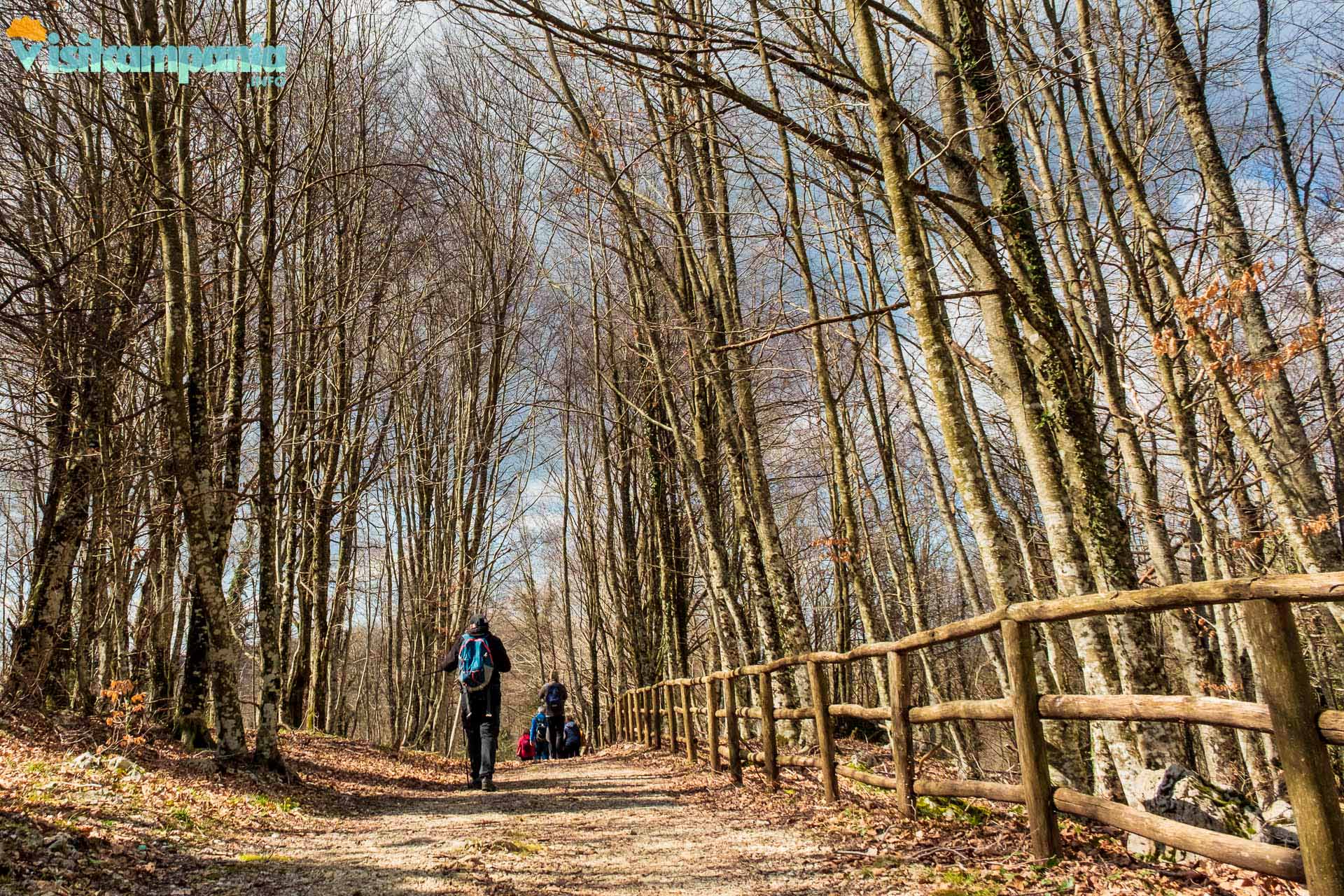
Immersed in the Cilento, Vallo di Diano and Alburni National Park, among thick beech and chestnut woods, the territory of Sant’Angelo a Fasanella is crossed by several paths of varying difficulty to spend pleasant days immersed in uncontaminated nature. Furthermore, some of these paths lead to the discovery of unexpected historical vestiges and karst caves such as the Antece sculpture or the cave of frà Gentile .
Tradition and folklore
Sant’Angelo a Fasanella preserves centuries-old traditions that are particularly intense during religious celebrations . The Feast of San Michele Arcangelo , dedicated to the town’s patron saint, takes place on 8 May and 29 September , in memory of the apparition of the Saint. In the nine days preceding this, a prayer vigil is organised in the Grotto of San Michele, where the procession stops for a solemn homage with a special song. The statue, starting from the Church of Santa Maria Maggiore, passes through the streets of the historic centre before returning to the Mother Church, creating a highly evocative atmosphere. Another moment of strong community participation is the Feast of Santa Lucia , celebrated on 11 July. Finally , on 8 September the town pays homage to the Madonna della Pietà , placing moments of devotion and conviviality at the centre of the day. Those who choose to visit Sant’Angelo a Fasanella during these celebrations have the opportunity to immerse themselves deeply in the spirit of the place , experiencing authentic local folklore up close.


